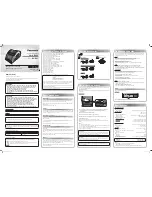
4.2.2
4.2.3
Calculating the EIRP of an External Antenna
For all frequency bands of the Trailblazer TB series digital radio, the peak power is
calibrated at the factory to be at m17dBm.
Using this example one can calculate the following:
Note that the radio is calibrated for a maximum output power of +17dBm.
Subtract the interconnecting cable and lightning protection losses of 2dB = total power
arriving to antenna of 15dBm. Now add the 2.4 GHz panel antenna gain of 18dBi and
this will give the total Effective Isotropic Rated Power of 33dBm.
For 2.4 GHz, the FCC uses a “3 for 1” rule. The “3 for 1” FCC rule states that for every
3dB above 6dB of antenna gain you must lower the maximum RF power available to the
antenna from +30dBm ( 1 watt) by 1dB. In this example the antenna gain is (18 – 6)
12dBi above 6 or (12 / 3) or 4 times 3dB above 6dB. Checking to see if the transmit
power meets the rule is done by subtracting 4 from +30dB eq26dBm. This
transmitter output RF power is set to +17dBm so it is below the limit.
For 5.8 GHz, the FCC allows a maximum EIRP of 50dBm. This would mean that an
antenna with a gain of 33dBi would be acceptable with no cable losses.
For 4.9 GHz, the FCC allows a maximum EIRP of 42dBm. If you had no losses in
between the radio and were using the supplied 22 dBi gain panel antenna you would
have an ERP of 39dBm which is under the maximum of 42.
Following this guideline ensures compliance with the maximum transmitter ERP allowed
with the antenna provided as a system.
RF Safety Hazard Warning
Due to the substantial amount of energy radiated from these antennas, it is imperative
that the antenna never be mounted closer than 2 Meters (6.7 Feet) from any persons.
Trailblazer Installation and User Manual
24
















































